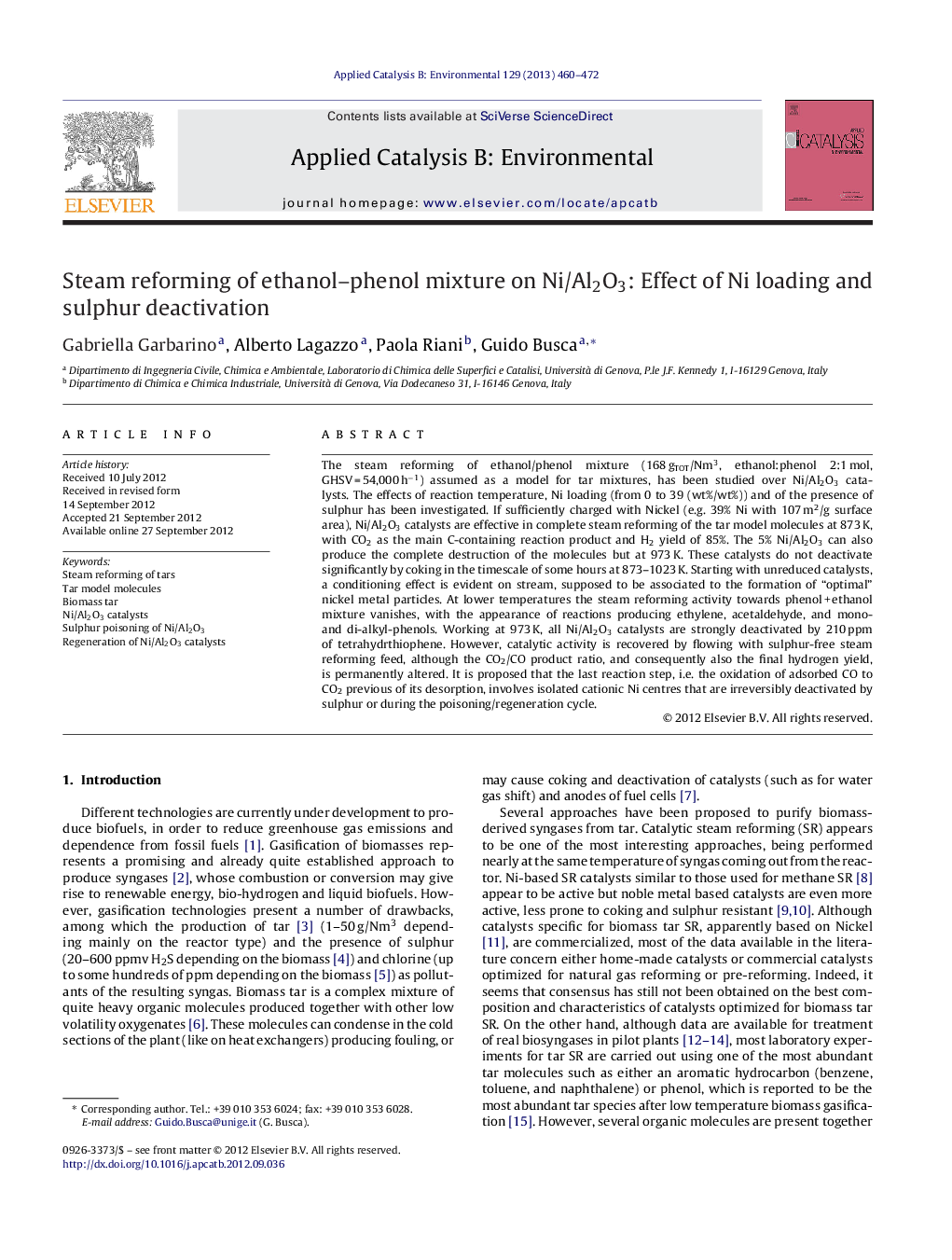| کد مقاله | کد نشریه | سال انتشار | مقاله انگلیسی | نسخه تمام متن |
|---|---|---|---|---|
| 46028 | 46428 | 2013 | 13 صفحه PDF | دانلود رایگان |

The steam reforming of ethanol/phenol mixture (168 gTOT/Nm3, ethanol:phenol 2:1 mol, GHSV = 54,000 h−1) assumed as a model for tar mixtures, has been studied over Ni/Al2O3 catalysts. The effects of reaction temperature, Ni loading (from 0 to 39 (wt%/wt%)) and of the presence of sulphur has been investigated. If sufficiently charged with Nickel (e.g. 39% Ni with 107 m2/g surface area), Ni/Al2O3 catalysts are effective in complete steam reforming of the tar model molecules at 873 K, with CO2 as the main C-containing reaction product and H2 yield of 85%. The 5% Ni/Al2O3 can also produce the complete destruction of the molecules but at 973 K. These catalysts do not deactivate significantly by coking in the timescale of some hours at 873–1023 K. Starting with unreduced catalysts, a conditioning effect is evident on stream, supposed to be associated to the formation of “optimal” nickel metal particles. At lower temperatures the steam reforming activity towards phenol + ethanol mixture vanishes, with the appearance of reactions producing ethylene, acetaldehyde, and mono- and di-alkyl-phenols. Working at 973 K, all Ni/Al2O3 catalysts are strongly deactivated by 210 ppm of tetrahydrthiophene. However, catalytic activity is recovered by flowing with sulphur-free steam reforming feed, although the CO2/CO product ratio, and consequently also the final hydrogen yield, is permanently altered. It is proposed that the last reaction step, i.e. the oxidation of adsorbed CO to CO2 previous of its desorption, involves isolated cationic Ni centres that are irreversibly deactivated by sulphur or during the poisoning/regeneration cycle.
Figure optionsDownload as PowerPoint slideHighlights
► Steam reforming of ethanol–phenol mixture is studied as model of biomass tar SR.
► Ethanol–phenol mixture is completely steam reformed over 39% Ni–alumina at 873 K
► H2 yields of 85% are obtained.
► Catalysts undergo conditioning upon working few hours at 873–1023 K, without evident deactivation.
► Catalysts are deactivated if 210 ppm S are present, but are regenerated in the S-free stream.
Journal: Applied Catalysis B: Environmental - Volume 129, 17 January 2013, Pages 460–472